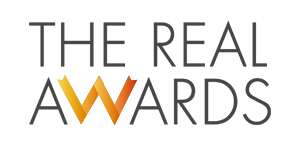One of the most valuable tools available to today’s organizations and businesses is data. With more information, brands can understand their consumers’ interests, wants, and needs better. This improved understanding allows companies to meet and surpass their clients’ expectations by developing messaging and goods that appeal to them.
Data collection can be divided into two categories; quantitative and qualitative. Quantitative data generally comes in the form of numbers, quantities, and values. This type of data tends to describe information in concrete and easily measurable terms. Since it is numeric and quantifiable, it works well for analytics. It allows companies to develop insights that can help them better understand their audience objectively and reliably. Qualitative data, on the other hand, is more descriptive than numeric. It is less concrete and more difficult to measure since it focuses on phrases and opinions rather than objective information. This type of data can help explain the “why” behind any information that quantitative data unearths. Examples of qualitative data can include online reviews customers write about a product, answers to a survey question, and conversations that customers have had with a customer service representative. Since qualitative data supplements quantitative data, it provides further insight. Let’s look at a few methods you can use to collect qualitative data.
While there are many different techniques to collect different types of quantitative data, there is a recommended process to follow.
The first step of the data collection process is choosing what details you want to collect. You need to decide what topics the information will cover, whom you wish to collect it from, and how much data you need. The goals you hope to accomplish with this data will determine your answers to those questions. Next, you need to start creating a plan on how you will collect your data. In the early stages of the planning process, you should establish a timeframe for your data collection. Ideally, you may want to gather different types of data continuously. Once you have a plan, you need to choose a data collection method. To select a suitable collection method, you will need to consider all of your previous steps. The next step is to collect the data itself. It is imperative to stick to the plan created and check on the progress regularly. It can also be useful to develop a schedule for studying how the collection is proceeding, especially if it is a continuous process. The analysis phase is crucial when trying to enhance market strategies, products, and business decisions because it turns raw data into valuable insights that can be used to improve the business.
When you’re doing research, there are several data collection methods at your disposal. These include directly asking customers for information, monitoring a company’s interactions with customers, or observing customer behavior. Choosing the right method to use depends entirely on your goals and the type of data you are trying to collect. Surveys are one way for businesses to ask customers for information directly. They consist of a list of questions that respondents can answer in just a few words and can be used to collect either quantitative or qualitative data. They can be distributed online, over email, on the phone, or in person. Online tracking through the business website or app is also an excellent tool for collecting customer data. Accessing the data through websites allows you to see how many people have visited their site, how long they were on it, and whether they clicked on any links. Web hosting providers generally collect this kind of information. If you don’t already have this information, then you can also use analytics software. Moreover, whether you sell goods in-store, online, or both, your transactional data can give you valuable insights about your customers and your company. The data can come from web stores, a third-party you have a contract with for e-commerce, or your in-store POS system.
This information can provide insights about how many products you sell, what types of products are most popular, and how often customers buy from the business. You can also collect valuable data from your marketing campaigns, whether you’re running them on search engines, webpages, email, or other platforms. Many software these days will provide data about ad success with the people who clicked on the ads, what time they clicked, and what devices they have used. Another excellent source of client data is social media. To improve your understanding of who your target audience should be, you can browse over your list of followers to determine what these people have in common. You can also keep track of brand mentions on social media by conducting regular searches, setting up alerts, or using third-party social media monitoring software. Many social networking platforms will also give you statistics on how well your posts are performing. Third-party applications can provide you with even more detailed information.
Rwazi is a data services company that is dedicated to helping businesses around the world collect and analyze on-ground data from African countries. They provide organizations with new on-ground data on products, services, and activities from the African continent by utilizing a network of mappers and data collectors spread across urban and rural areas in Africa. While the company is based in Mauritius, Rwazi serves customers across the globe in different industries, including healthcare, consumer goods, automotive, education, finance, agriculture, energy, transport, and media.
The team behind Rwazi understands that organizations need near real-time, on-ground data to make effective decisions on activities such as expansion, investments, distribution, new product/service offerings, and reach target beneficiaries. For this reason, they’ve developed a network of 5,000+ mappers are spread across cities, municipalities, towns, and villages in 40 African countries. This network is expected to reach 50,000+ mappers by the end of the year.
Customers can utilize the Rwazi network to gain data from target areas and personas. Given the travel limitations that the COVID-19 pandemic has caused, organizations can execute on-ground activities even in the regions that are difficult to reach.
Currently, Rwazi is the first and only company in the world with a large and growing network of mappers spread all over sub-Saharan Africa. They want to help organizations get the data they need to make informed decisions, in addition to helping millions of young people in Africa who need more opportunities to earn an income.
For more information about Rwazi’s data services and their platform, check out their social media platforms.
Facebook: https://web.facebook.com/RwaziLtd/?_rdc=1&_rdr
Instagram: https://www.instagram.com/rwaziltd/?hl=en
LinkedIn: https://www.linkedin.com/company/rwazi/
Twitter: https://twitter.com/rwaziltd?lang=en

